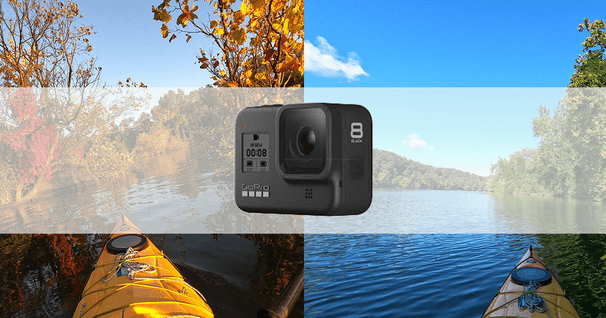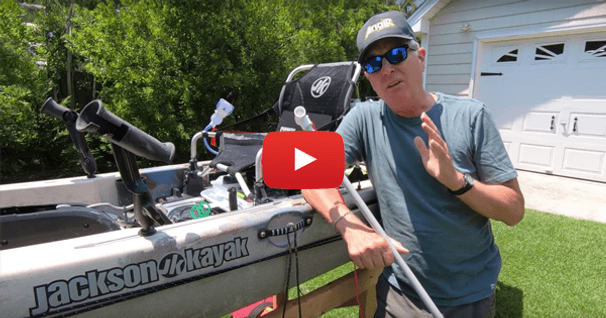Camping Gear Features That Don't Cut It
Dozens of new canoeing and camping products are introduced every year. Some are honestly useful; others are just goofy gimmicks designed to get your money. If used hard, many won’t last more than a season or two—and perhaps that’s the manufacturer’s plan. In my flagship book, “Canoeing Wild Rivers, 30th Anniversary Edition”, I wrote:
“… carefully examine everything before you buy. If a zipper looks weak, it probably is; if there’s a knob that can break, it likely will; if there’s an unsecured part that can be lost, bet on it. Assume that if something can fail, it will…Most important, be aware that some highly touted products that work flawlessly over the short haul fail when the weeks turn to years. So be wary of advertising claims…Instead, heed the advice of those who canoe wild rivers year after year. These are the real experts even though their opinions and methods are seldom seen in print.”
Let’s face it: wilderness canoeing and camping are “fringe of the fringe” sports. If you want to make money you target your products to casual state-park campers, backpackers, hunters and anglers, not to esoteric canoe campers who hammer their equipment over the long haul. Here are some features to avoid if you’re going in harms way.
TINY ZIPPERS
Zippers on outdoor gear keep getting smaller every year. Why? To save weight and bulk, of course. No matter that a few plant seeds or grains of sand will stop them cold. The thinking is that very few will find their way into places that are truly wild.
Forty years ago, I bought a pair of Trailwise down-filled sleeping bags (a three-season and summer-weight bag)—they were recommended by Colin Fletcher in his classic book, “The Complete Walker”. The nylon shells of both bags have long worn out but the big nylon ladder zippers still function perfectly even when operated with one hand from inside the bag. Not so with the small coil zipper on a recently purchased high-end sleeping bag. Unless I use two hands—one to stretch the material and the other to pull the slider—the zipper jams. Always! I like the bag but I constantly cuss the zipper! I should have climbed inside and tried the slider before I bought it!
It’s interesting to note that the zippers on some older sleeping bags had a disconnect feature that enabled you to burst out of the bag in an emergency. To activate the feature you just pulled up smartly on the slider and the closed zipper separated. I can’t imagine why this safety feature was discontinued.
LIGHTWEIGHT, ENGINEERED CANOE YOKES
Carrying yokes range from terrific to terrible, and you won’t know which is which until you try them. Many years ago, I reviewed four different canoe yokes for “Canoe & Kayak” magazine. I installed each test yoke on a different Royalex tripping canoe; then, it was off to Canada. At each portage, I noted which canoe was portaged first and which was left for last. The traditional Minnesota yoke with its curved ash neck piece and thick cushioned shoulder pads—was the hands-down winner. Everyone rushed to carry that canoe. None of the engineered, high-tech designs drew a smile. Yes, they were much lighter and they looked real cool. But they just weren’t comfortable!
PVC-COATED PORTAGE PACKS DESIGNED FOR RAFTING
The PVC-coated waterproof packs designed for rafting are nice. For rafting! They stay secured inside the raft all day and are seldom carried very far. But canoeists may portage their packs for miles; often through sharp, unforgiving terrain. Packs are tiredly tossed into canoes and onto rocks. Holes eventually develop. But there are no leaks because the pack contents are sealed inside a pair of huge 4-mil-thick plastic bags or a giant dedicated dry bag. (I prefer the Piragis Pack Liner V2 Dry Bag which is sized to fit the largest portage pack.) PVC rafting packs are perceived as watertight so they are seldom lined with a protective waterproof bag. This is okay for raft trips where packs don’t take a beating, but it’s not okay for canoe trips where they do!
An interesting observation: In February, 2016, I canoed 230 miles of the Rio Grande River on the Texas/Mexico border. I paddled a 12 foot SOAR boat (a very high-end inflatable canoe) which is self-bailing, so gear sits in water. I used a PVC-coated rafting pack for this trip. Big mistake. The temperature dropped into the teens at night. Wrestling with a frozen, hard-as-cardboard, plastic-coated pack every morning wasn’t fun. Next time, I’ll use my CCS nylon portage pack, with a waterproof plastic liner and a V2 dry bag inside.
PACKS THAT DON’T HAVE TUMPLINES
Most people don’t like tumplines. Then again, few have tried them—that is, adjusted properly so they work as intended. The Voyageurs were well aware of shoulder straps and hip belts, but they relied entirely on tumplines. Why? Because s head strap holds the load close to your back and keeps it from swaying and knocking you off balance. The effect is most pronounced when going uphill. The professional Sherpa’s of the Himalaya’s rely exclusively on tumplines as does everyone in underdeveloped parts of the world where heavy loads are routinely carried. To my knowledge, Frost River and Duluth Pack are the only companies that offer packs with optional tumplines. But you can easily add one to any pack. All you need is a sewing machine and some webbing. Mounting specifics are in my books.
Note: If you carry heavy loads without a tumpline, you’ll want a pack with a sophisticated carrying harness—and these don’t come cheap. But if you learn to use a tumpline, any pack will do because the load is supported by your strong neck muscles, not your hips and shoulders. No need for a fancy, pricey harness if you use a tumpline. A backpacker needs just one big pack; a canoeist may need three to five. If cost counts, learn to use a tumpline!
TINKER TOY GASOLINE STOVES
I mourn the passing of self-contained gasoline stoves like the, Optimus 111B and Phoebus 625. They were designed as a single, complete unit and had no “tinker toy” parts to snap together (and bend or break), and no exposed ball valves that can wear or be clogged by debris. One twist of the powerful, mechanically-geared cleaning needle removed carbon build-up in the jet. The new versions of these stoves rely on a magnetically activated or “shaker” needle which often binds (or with high heat, when hammered hard, may weld itself into the jet and render the stove useless. It has happened to me! Twice! ). The new gasoline stoves are less compact and more problematic than the old self-contained models, and weight-wise, they are lighter largely only by definition—that is, their advertised weight does not include the weight of the fuel tank, which is an obvious necessity! The old self-contained stoves had integral windscreens; new ones use metal foil which becomes black and greasy. Some models also have plastic parts that can melt in a flare up. Expect carbon-black hands and some leaking fuel when you take your tinker-toy stove apart to pack it away. The old self-contained stoves, were protected by a sturdy metal box. They were handier, cleaner to handle, and faster to get into and out of action.
TENT FEATURES THAT DON’T MAKE THE GRADE
Early nylon tents had long rain flies that staked to the ground (to defy wind and rain), protective awnings, big zippers—and no “plastic windows” that scratch, cloud and tear over time. The long discontinued Gerry and Cannondale tents had permanently attached rainflies, as do nearly all of the best modern European tents. An important advantage of a permanently attached fly is that the tent can be pitched in rain without getting soaked (the attached fly covers the canopy during set-up). And since there’s no fly to connect, the tent goes up more quickly.
Most of the world’s best tents are constructed from ultralight silicone-nylon, which is stronger, more tear-resistant and lighter than the conventional polyurethane-coated fabrics used in American tents. Why don’t we follow suit? The ruse is that sil-nyl is not flame-proof so it could be dangerous in a tent fire. But no one cooks inside their tent these days, so it’s a non-issue. Fire-retardant-treated nylon fabric won’t burn but it will drip burning nylon on you if it contacts flame. Remember the Falkland Islands war (1982)? The British were wearing polypropylene long underwear when the Argentinean missile hit. The burns from the dripping plastic were terrible. As a result, the British navy no longer wears plastic underwear! This fire-retardant nonsense is just a way of legally denying the competition. I might add that while European tents made of sil-nylon can’t be sold in most states, they are available on the internet.
COOKING POTS WITH HEAT EXCHANGERS
For two decades I outfitted and guided canoe trips in northern Canada for the Science Museum of Minnesota, almost always traveling with a group of ten. To shorten the cooking time, save stove fuel and keep food hot long enough for seconds, I developed the “cozy system” of cooking (detailed in my books). My method wasn’t unique; tea drinkers have used cozies for centuries on their porcelain tea pots. The latest engineering wonder in cookware design is to weld metal fins to the bottom of pots. The fins contain the heat and shorten cooking time, but they don’t keep hot food hot. Cozies do both, and they are lighter, cheaper and more practical. Set a pot with a finned heat exchanger on the ground and you’ll have fun removing the duff it collects. And these pots don’t nest well—or at all.
Sometimes, simple ideas are good ideas! www.cliffcanoe.com
Related Articles
~A Paddler's Post submitted by Gregg Jackson~ For decades I had combined the joys of hiking and…
Forget paddles and forget pedals, there is a new way to get from Point A to Point B in your kayak: Jet.…
Learn to make a good DIY stake out pole so you can save some money for other kayak updates!
Looking to step up your kayak fishing game? Check out how to add a fish finder to your YAK and soon…



